What Car Guide offers a comprehensive analysis to help you navigate the complex automotive market. CONDUCT.EDU.VN simplifies the car-buying process, providing valuable insights into vehicle types, costs, safety features, and future trends. Explore our expertly curated resources for reliable car buying tips and automotive advice.
1. Understanding Car Body Styles and Powertrains
The automotive landscape is diverse, offering a wide array of body styles and powertrains. Choosing the right one requires understanding their unique characteristics and how they align with your needs. This section of our what car guide explores the most common types of vehicles and their respective advantages.
1.1. Body Styles
- Sedans: Sedans are a classic choice, known for their practicality and comfort. They typically feature four doors and a separate trunk, making them ideal for families and commuters.
- SUVs (Sport Utility Vehicles): SUVs combine passenger comfort with increased cargo space and, often, all-wheel-drive capabilities. They are popular for their versatility and ability to handle various road conditions.
- Trucks: Trucks are built for heavy-duty tasks, offering significant towing and hauling capacity. They come in various sizes, from light-duty to heavy-duty, catering to different needs.
- Hatchbacks: Hatchbacks feature a rear door that swings upward, providing easy access to the cargo area. They are known for their fuel efficiency and maneuverability, making them great for city driving.
- Minivans: Minivans prioritize passenger space and comfort, with sliding doors and ample seating. They are designed for families needing maximum interior room and convenience.
- Coupes: Coupes are characterized by their sporty design, typically featuring two doors and a sloping roofline. They emphasize style and performance over practicality.
- Convertibles: Convertibles offer an open-air driving experience, with a retractable roof that can be lowered to enjoy the elements. They are often associated with luxury and leisure.
1.2. Powertrains
- Gasoline Engines: Gasoline engines are the most traditional type of powertrain, providing a balance of power and efficiency. They are readily available and supported by a widespread fueling infrastructure.
- Diesel Engines: Diesel engines are known for their high torque output and fuel efficiency, making them suitable for heavy-duty applications. They are commonly found in trucks and SUVs.
- Electric Vehicles (EVs): EVs are powered by electric motors and offer zero tailpipe emissions. They are gaining popularity due to their environmental benefits and reduced running costs.
- Hybrid Vehicles: Hybrids combine a gasoline engine with an electric motor, offering improved fuel efficiency compared to traditional gasoline vehicles. They come in various forms, including mild hybrids, full hybrids, and plug-in hybrids.
- Plug-In Hybrid Vehicles (PHEVs): PHEVs offer the benefits of both hybrid and electric vehicles, with a larger battery pack that can be charged from an external source. They can travel a significant distance on electric power alone, reducing reliance on gasoline.
Understanding these body styles and powertrains is crucial for making an informed decision. CONDUCT.EDU.VN provides detailed comparisons and reviews to help you narrow down your options based on your specific needs and preferences.
2. Calculating the True Cost of Car Ownership
Beyond the initial purchase price, owning a car involves various ongoing expenses that can significantly impact your budget. This section of our what car guide helps you understand and calculate the true cost of car ownership.
2.1. Depreciation
Depreciation is the decline in a car’s value over time. It is often the largest expense of car ownership. Factors influencing depreciation include the car’s make, model, condition, and mileage.
2.2. Fuel Costs
Fuel costs depend on the car’s fuel efficiency and your driving habits. To estimate fuel costs, consider your average miles driven per year and the current price of fuel.
2.3. Insurance
Car insurance protects you financially in case of accidents or theft. Insurance premiums vary based on factors such as your age, driving record, and the car’s value.
2.4. Maintenance and Repairs
Regular maintenance, such as oil changes and tire rotations, is essential for keeping your car in good condition. Repairs can be unexpected and costly, so it’s important to factor them into your budget.
2.5. Registration and Taxes
Car registration fees and taxes vary by state and locality. These expenses are typically paid annually or biennially.
2.6. Financing Costs
If you finance your car, you’ll need to consider interest payments. The interest rate and loan term will affect the total cost of financing.
2.7. Calculating Total Ownership Costs
To calculate the total cost of car ownership, add up all the expenses mentioned above over a specific period, such as five years. This will give you a comprehensive view of what you can expect to pay.
| Expense Category | Description | Example |
|---|---|---|
| Depreciation | Decline in car’s value over time | $3,000 per year |
| Fuel Costs | Expenses for gasoline or electricity | $2,000 per year |
| Insurance | Premiums for car insurance coverage | $1,200 per year |
| Maintenance/Repairs | Costs for routine maintenance and unexpected repairs | $800 per year |
| Registration/Taxes | Annual fees for car registration and taxes | $300 per year |
| Financing Costs | Interest payments on car loan | $1,500 per year |
| Total Annual Cost | Sum of all expenses | $8,800 per year |
| Total 5-Year Cost | Total annual cost multiplied by 5 | $44,000 over 5 years |
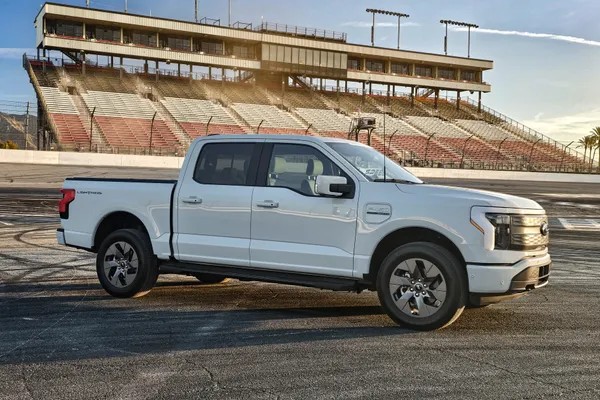
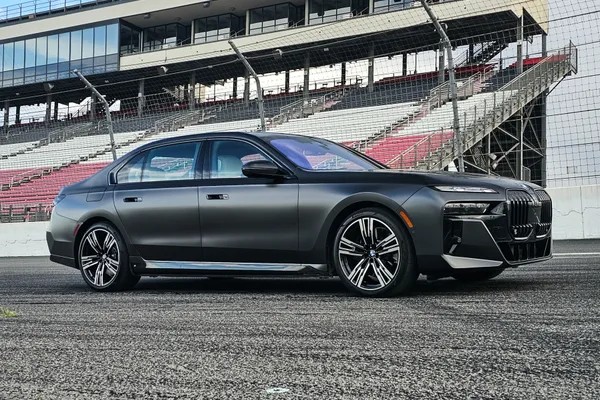
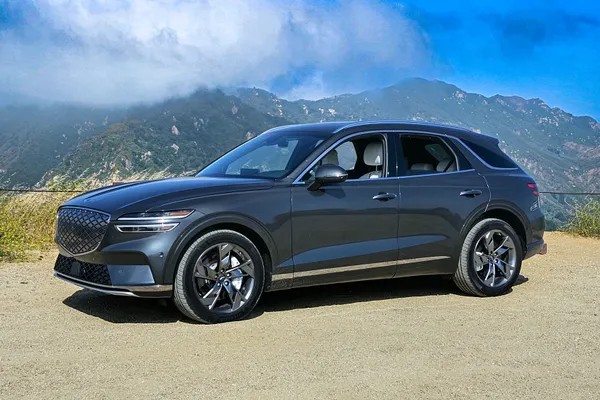
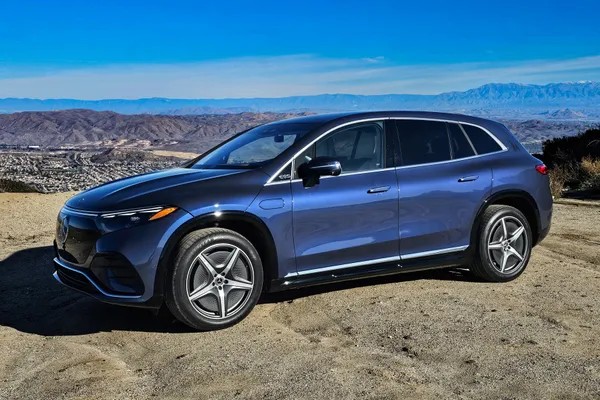



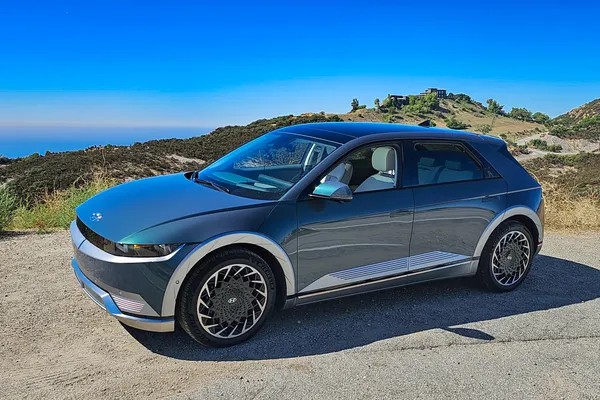
Understanding these costs can help you make a more informed decision and avoid financial surprises. CONDUCT.EDU.VN offers tools and resources to help you estimate your car ownership costs accurately.
3. Prioritizing Safety: Essential Car Safety Features
Safety should be a top priority when choosing a car. Modern vehicles are equipped with a range of advanced safety features designed to protect occupants and prevent accidents. This section of our what car guide highlights the most important safety features to consider.
3.1. Active Safety Features
Active safety features help prevent accidents by providing warnings and intervening when necessary.
- Electronic Stability Control (ESC): ESC helps maintain control of the car during emergency maneuvers by detecting and reducing skidding.
- Anti-lock Braking System (ABS): ABS prevents the wheels from locking up during hard braking, allowing you to maintain steering control.
- Traction Control System (TCS): TCS prevents wheel spin during acceleration, improving traction and stability.
- Forward Collision Warning (FCW): FCW alerts you when the car detects a potential collision with a vehicle or object ahead.
- Automatic Emergency Braking (AEB): AEB automatically applies the brakes if you don’t respond to a forward collision warning.
- Lane Departure Warning (LDW): LDW alerts you when the car drifts out of its lane without signaling.
- Lane Keeping Assist (LKA): LKA gently steers the car back into its lane if it detects lane drifting.
- Blind Spot Monitoring (BSM): BSM alerts you when there’s a vehicle in your blind spot.
- Rear Cross-Traffic Alert (RCTA): RCTA alerts you when a vehicle is approaching from the side while you’re backing up.
- Adaptive Cruise Control (ACC): ACC automatically adjusts the car’s speed to maintain a safe distance from the vehicle ahead.
3.2. Passive Safety Features
Passive safety features protect occupants in the event of a collision.
- Airbags: Airbags provide cushioning and support to reduce the risk of injury during a crash.
- Seat Belts: Seat belts are essential for restraining occupants and preventing them from being ejected from the car.
- Strong Body Structure: A strong body structure helps absorb and distribute impact forces during a crash.
- Side Impact Beams: Side impact beams reinforce the doors to protect occupants in side collisions.
- Head Restraints: Head restraints help prevent whiplash injuries during rear-end collisions.
3.3. Advanced Safety Technologies
- Automatic High Beams: Automatically switch between high and low beams based on traffic conditions.
- Pedestrian Detection: Detects pedestrians in the car’s path and provides warnings or automatic braking.
- Driver Attention Monitoring: Monitors the driver’s alertness and provides warnings if signs of fatigue are detected.
Choosing a car with a comprehensive suite of safety features can significantly reduce your risk of being injured in an accident. CONDUCT.EDU.VN provides safety ratings and reviews to help you make an informed decision.
| Safety Feature | Description | Benefit |
|---|---|---|
| Electronic Stability Control (ESC) | Helps prevent skidding during emergency maneuvers | Maintains control of the car |
| Anti-lock Braking System (ABS) | Prevents wheels from locking up during hard braking | Allows steering control during braking |
| Forward Collision Warning (FCW) | Alerts driver to potential collisions ahead | Provides early warning to avoid accidents |
| Automatic Emergency Braking (AEB) | Automatically applies brakes if driver doesn’t respond to FCW | Reduces severity of or prevents collisions |
| Lane Keeping Assist (LKA) | Gently steers the car back into its lane if it detects lane drifting | Helps prevent unintentional lane departures |
| Blind Spot Monitoring (BSM) | Alerts driver to vehicles in blind spots | Reduces risk of accidents when changing lanes |
| Airbags | Provide cushioning and support during a crash | Reduces risk of injury |
| Seat Belts | Restrain occupants during a crash | Prevents ejection from the car and reduces risk of injury |
4. The Future of Cars: Trends and Innovations
The automotive industry is constantly evolving, with new technologies and trends emerging regularly. This section of our what car guide explores some of the exciting developments shaping the future of cars.
4.1. Electrification
Electric vehicles (EVs) are becoming increasingly popular as governments and consumers seek to reduce emissions. Battery technology is improving, leading to longer ranges and faster charging times.
4.2. Autonomous Driving
Autonomous driving technology is advancing rapidly, with the potential to revolutionize transportation. Self-driving cars promise to improve safety, reduce congestion, and enhance mobility for those who cannot drive themselves.
4.3. Connectivity
Connected car technology allows vehicles to communicate with each other and with infrastructure, providing real-time traffic updates, safety alerts, and entertainment options.
4.4. Shared Mobility
Shared mobility services, such as ride-sharing and car-sharing, are changing the way people access transportation. These services offer flexibility and convenience, reducing the need for personal car ownership.
4.5. Alternative Fuels
In addition to electric vehicles, other alternative fuels, such as hydrogen and biofuels, are being explored as potential replacements for gasoline and diesel.
4.6. Over-the-Air Updates
Over-the-air (OTA) updates allow car manufacturers to remotely update software and add new features to vehicles, improving performance and extending their lifespan.
4.7. Personalized Driving Experiences
Cars are becoming more personalized, with features such as customizable dashboards, seat settings, and entertainment preferences.
These trends and innovations are transforming the automotive landscape and creating exciting new possibilities for the future of transportation. CONDUCT.EDU.VN stays up-to-date on the latest developments to provide you with the most current information.
| Trend | Description | Potential Impact |
|---|---|---|
| Electrification | Increasing adoption of electric vehicles (EVs) | Reduced emissions, lower running costs, improved performance |
| Autonomous Driving | Development of self-driving car technology | Improved safety, reduced congestion, enhanced mobility |
| Connectivity | Vehicles communicating with each other and infrastructure | Real-time traffic updates, safety alerts, enhanced entertainment |
| Shared Mobility | Services such as ride-sharing and car-sharing | Increased flexibility, reduced need for personal car ownership |
| Alternative Fuels | Exploration of hydrogen, biofuels, and other non-gasoline options | Diversified energy sources, reduced reliance on fossil fuels |
| OTA Updates | Remote software updates and feature additions | Improved performance, extended vehicle lifespan, new functionality |
| Personalized Experiences | Customizable dashboards, seat settings, and entertainment preferences | Enhanced comfort, convenience, and enjoyment |
5. Evaluating Vehicles: AAA’s Testing and Ranking Methodology
To provide unbiased and comprehensive vehicle evaluations, AAA employs a rigorous testing and ranking methodology. This section of our what car guide explains the key elements of AAA’s approach.
5.1. Performance Testing
AAA conducts a variety of performance tests to evaluate a car’s acceleration, braking, handling, and fuel efficiency.
- Acceleration: Measures the time it takes for the car to reach a certain speed from a standstill.
- Braking: Measures the distance it takes for the car to come to a complete stop from a certain speed.
- Handling: Evaluates the car’s responsiveness and stability during cornering and maneuvering.
- Fuel Efficiency: Measures the car’s fuel consumption in various driving conditions.
5.2. Comfort and Convenience Testing
AAA assesses the car’s comfort and convenience features, including seat comfort, interior space, infotainment system, and ease of use.
- Seat Comfort: Evaluates the comfort and support provided by the car’s seats.
- Interior Space: Measures the amount of legroom, headroom, and cargo space in the car.
- Infotainment System: Assesses the ease of use and functionality of the car’s infotainment system.
- Ease of Use: Evaluates the intuitiveness of the car’s controls and features.
5.3. Safety Testing
AAA considers the car’s safety features and crash test ratings from organizations such as the Insurance Institute for Highway Safety (IIHS) and the National Highway Traffic Safety Administration (NHTSA).
- IIHS Ratings: IIHS conducts crash tests to evaluate a car’s ability to protect occupants in various types of collisions.
- NHTSA Ratings: NHTSA also conducts crash tests and assigns safety ratings to vehicles.
5.4. Overall Ranking
AAA combines the results of the performance, comfort, convenience, and safety tests to calculate an overall ranking for each vehicle. This ranking provides a comprehensive assessment of the car’s strengths and weaknesses.
5.5. Expert Reviews
In addition to objective testing, AAA incorporates expert reviews to provide additional insights and perspectives on each vehicle.
By using a combination of objective testing and expert reviews, AAA provides consumers with the information they need to make informed car-buying decisions. CONDUCT.EDU.VN utilizes AAA’s data and insights to provide you with the most reliable and trustworthy car reviews.
| Testing Category | Description | Key Metrics |
|---|---|---|
| Performance | Measures acceleration, braking, handling, and fuel efficiency | 0-60 mph time, braking distance, cornering grip, MPG |
| Comfort and Convenience | Assesses seat comfort, interior space, infotainment system, and ease of use | Seat adjustability, legroom, headroom, cargo volume, system responsiveness |
| Safety | Considers safety features and crash test ratings from IIHS and NHTSA | IIHS Top Safety Pick, NHTSA star ratings, presence of advanced safety features |
| Overall Ranking | Combines results from all testing categories to provide a comprehensive assessment | Weighted average of performance, comfort, convenience, and safety scores |
| Expert Reviews | Incorporates expert opinions and insights on each vehicle | Qualitative assessments of driving experience, interior design, and overall value |
6. Car Guide Winners: Top Vehicle Recommendations
Based on AAA’s rigorous testing and evaluation, several vehicles have emerged as top performers in their respective categories. This section of our what car guide highlights the winners.
6.1. 1st Place Large SUV: 2023 Mercedes-Benz EQS 580 4MATIC SUV
The 2023 Mercedes-Benz EQS 580 4MATIC SUV stands out for its luxurious features, strong performance, and comfortable ride. Its electric drivetrain delivers smooth and abundant power, while its air suspension provides an ultra-luxurious ambience.
- Vehicle Type: Large SUV
- Fuel Type: Electric
- MPGe: 79/74
- Price as Tested: $138,580
6.2. 1st Place Pickup: 2023 Ford F-150 Lightning Lariat
The 2023 Ford F-150 Lightning Lariat is an electric version of America’s most popular vehicle, offering a remarkable combination of versatility, performance, and technology. It provides plenty of room for passengers, lots of storage cubbies, and a dual-motor, all-wheel-drive setup.
- Vehicle Type: Pickup
- Fuel Type: Electric
- MPGe: 78/63
- Price as Tested: $86,229
6.3. 1st Place Large: 2023 BMW i7 xDrive60
The 2023 BMW i7 xDrive60 is an all-electric variant of BMW’s 7 Series flagship sedan, offering instant acceleration, abundant power, and a relaxed and comfortable ride. Its luxurious cabin is appointed with high-quality materials and cutting-edge technology.
- Vehicle Type: Large
- Fuel Type: Electric
- MPGe: 85/89
- Price as Tested: $151,995
6.4. 1st Place Midsize SUV: 2023 Genesis Electrified GV70 Prestige
The 2023 Genesis Electrified GV70 Prestige is a luxury midsize SUV that combines sleek design with strong performance and a comfortable ride. Its dual electric motors provide smooth and responsive acceleration, while its stylish interior offers upmarket materials and excellent fit and finish.
- Vehicle Type: Midsize SUV
- Fuel Type: Electric
- MPGe: 98/83
- Price as Tested: $74,350
6.5. 1st Place Small SUV: 2023 Hyundai IONIQ 5 Limited
The 2023 Hyundai IONIQ 5 Limited is a compact crossover that offers a smooth, comfortable ride, good suspension damping, and a comprehensive set of advanced safety features. Its open, airy cabin provides good headroom and legroom for all passengers.
- Vehicle Type: Small SUV
- Fuel Type: Electric
- MPGe: 113/90
- Price as Tested: $58,005
6.6. 1st Place Midsize: 2023 Mercedes-Benz EQE 350 4MATIC Sedan
The 2023 Mercedes-Benz EQE 350 4MATIC Sedan is an EV alternative to the automaker’s gasoline-powered E-Class sedan, offering a luxurious, tech-heavy vehicle with smooth power, a refined ride, and a cabin replete with ultra-plush materials.
- Vehicle Type: Midsize
- Fuel Type: Electric
- MPGe: 86/86
- Price as Tested: $92,990
6.7. 1st Place Small: 2023 Volvo S60 Recharge Ultimate Black Edition
The 2023 Volvo S60 Recharge Ultimate Black Edition is a plug-in hybrid that combines a stylish exterior with a powerful engine and a strong EV-only range. Its minimalist interior is replete with high-quality materials, and a comprehensive set of advanced safety features is standard.
- Vehicle Type: Small
- Fuel Type: Plug-In Hybrid
- mpg: 30/33
- Price as Tested: $63,690
6.8. 1st Place under 40k: 2023 Honda CR-V Hybrid Sport Touring
The 2023 Honda CR-V Hybrid Sport Touring delivers excellent value, with a comfortable ride, a spacious cabin, and a solid lineup of ADAS features. Its smooth drivetrain delivers both adequate power and excellent fuel efficiency.
- Vehicle Type: Small SUV
- Fuel Type: Gasoline
- mpg: 40/34
- Price as Tested: $39,845
These car guide winners represent the best vehicles in their respective categories, offering a combination of performance, comfort, safety, and value.
7. Expert Car Buying Advice from CONDUCT.EDU.VN
Choosing the right car can be a daunting task, but with the right information and guidance, you can make an informed decision that meets your needs and budget. CONDUCT.EDU.VN offers a wealth of expert car buying advice to help you navigate the process.
7.1. Define Your Needs
Start by defining your needs and priorities. Consider factors such as the number of passengers you need to accommodate, the type of driving you’ll be doing, and your budget.
7.2. Research Different Models
Research different models that meet your needs. Read reviews, compare specifications, and check safety ratings.
7.3. Set a Budget
Determine how much you can afford to spend on a car. Remember to factor in not only the purchase price but also the ongoing costs of ownership, such as fuel, insurance, and maintenance.
7.4. Consider Financing Options
If you need to finance your car, shop around for the best interest rates and loan terms. Compare offers from different lenders to find the most favorable terms.
7.5. Take a Test Drive
Before making a decision, take a test drive of the models you’re considering. Pay attention to how the car feels on the road, how comfortable the seats are, and how easy the controls are to use.
7.6. Get a Pre-Purchase Inspection
If you’re buying a used car, get a pre-purchase inspection from a qualified mechanic. This will help you identify any potential problems before you buy the car.
7.7. Negotiate the Price
Don’t be afraid to negotiate the price with the dealer. Do your research and know what the car is worth before you start negotiating.
7.8. Read the Fine Print
Before signing any paperwork, read the fine print carefully. Make sure you understand all the terms and conditions of the sale.
7.9. Protect Your Investment
Once you’ve bought your car, protect your investment by keeping it properly maintained and insured.
By following these car buying tips, you can increase your chances of finding the right car at the right price. CONDUCT.EDU.VN provides detailed guides and resources to help you every step of the way.
8. Understanding Vehicle Costs: A Deeper Dive
Beyond the initial price tag, the total cost of owning a car encompasses numerous factors that can significantly impact your financial planning. CONDUCT.EDU.VN offers comprehensive tools and resources to help you understand these costs and make informed decisions.
8.1. Depreciation: The Silent Killer
Depreciation is often the most significant expense associated with car ownership. Understanding how different makes and models depreciate over time can save you thousands of dollars. Luxury cars and certain brands tend to depreciate faster than others.
- Strategies to Minimize Depreciation:
- Buy Used: Let someone else absorb the initial depreciation hit.
- Choose Wisely: Research which cars hold their value well.
- Maintain Well: Regular maintenance can slow depreciation.
8.2. Fuel Efficiency: Gas vs. Electric
Fuel costs are an ongoing expense that can vary widely depending on your vehicle and driving habits. Electric vehicles offer significant savings on fuel, but come with their own set of costs.
- Factors Affecting Fuel Costs:
- Driving Habits: Aggressive driving increases fuel consumption.
- Maintenance: Poorly maintained cars are less fuel-efficient.
- Fuel Prices: Fluctuations in gas prices can impact your budget.
8.3. Insurance: Protecting Your Investment
Car insurance is a necessity and its cost can vary greatly. Factors like your driving record, age, and the car’s value play a significant role in determining your premiums.
- Tips for Lowering Insurance Costs:
- Shop Around: Compare rates from different insurers.
- Increase Deductible: A higher deductible lowers your premium.
- Bundle Policies: Insure multiple vehicles or home and auto with the same company.
8.4. Maintenance and Repairs: Planning for the Unexpected
Regular maintenance is crucial for keeping your car running smoothly and avoiding costly repairs. However, unexpected repairs can still occur.
- Strategies for Managing Maintenance and Repair Costs:
- Follow Maintenance Schedule: Adhere to the manufacturer’s recommended schedule.
- Find a Reliable Mechanic: Build a relationship with a trusted mechanic.
- Consider Extended Warranty: An extended warranty can provide peace of mind.
8.5. Registration and Taxes: An Annual Burden
Car registration fees and taxes vary by state and can add up over time. Be sure to factor these costs into your budget.
- Understanding Registration and Tax Fees:
- Check State Regulations: Each state has its own fee structure.
- Budget Annually: Set aside funds each year to cover these costs.
8.6. Financing: Weighing Your Options
If you choose to finance your car, the interest rate and loan term can significantly impact the total cost.
- Tips for Securing Favorable Financing:
- Improve Credit Score: A good credit score gets you a better rate.
- Shop Around for Loans: Compare offers from different lenders.
- Consider a Shorter Loan Term: Shorter terms mean less interest paid.
9. Exploring the Latest Automotive Technologies
The automotive industry is rapidly evolving, with innovations transforming the way we drive. CONDUCT.EDU.VN keeps you informed about the latest technologies and their impact on your driving experience.
9.1. Electric Vehicle (EV) Technology
EVs are at the forefront of automotive innovation, offering environmental and performance benefits.
- Key EV Technologies:
- Battery Technology: Advancements in battery capacity and charging times.
- Regenerative Braking: Capturing energy during braking to recharge the battery.
- One-Pedal Driving: A driving mode that maximizes regenerative braking.
9.2. Autonomous Driving Systems
Self-driving cars promise to revolutionize transportation, improving safety and convenience.
- Levels of Automation:
- Level 0: No Automation: The driver controls everything.
- Level 1: Driver Assistance: Features like cruise control.
- Level 2: Partial Automation: Features like lane keeping assist and adaptive cruise control.
- Level 3: Conditional Automation: The car can handle most driving situations, but the driver must be ready to take over.
- Level 4: High Automation: The car can handle all driving situations in certain conditions.
- Level 5: Full Automation: The car can drive itself in all conditions.
9.3. Advanced Driver-Assistance Systems (ADAS)
ADAS technologies enhance safety and make driving easier.
- Common ADAS Features:
- Automatic Emergency Braking (AEB): Automatically applies the brakes to avoid or mitigate collisions.
- Lane Departure Warning (LDW): Alerts the driver if the car drifts out of its lane.
- Blind Spot Monitoring (BSM): Alerts the driver to vehicles in their blind spots.
- Adaptive Cruise Control (ACC): Maintains a set speed and distance from the vehicle ahead.
9.4. Connectivity and Infotainment
Connected car technologies enhance the driving experience with features like navigation, entertainment, and remote access.
- Key Connectivity Features:
- Over-the-Air (OTA) Updates: Software updates delivered wirelessly.
- Smartphone Integration: Seamless integration with Apple CarPlay and Android Auto.
- Connected Navigation: Real-time traffic updates and route optimization.
9.5. Alternative Fuels
Beyond electric, other alternative fuels are being explored to reduce emissions.
- Alternative Fuel Options:
- Hydrogen Fuel Cells: Converting hydrogen into electricity to power the vehicle.
- Biofuels: Fuels derived from renewable sources like plants and algae.
10. Frequently Asked Questions (FAQ) About Car Buying
Navigating the car-buying process can be confusing. Here are some frequently asked questions to help you make informed decisions.
Q1: What is the best time of year to buy a car?
The end of the year (November and December) is often the best time to buy a car, as dealers are trying to meet quotas and clear out inventory.
Q2: Should I buy new or used?
The decision depends on your budget and priorities. New cars offer the latest technology and a warranty, while used cars are more affordable and depreciate less quickly.
Q3: How much should I put down on a car?
A larger down payment can lower your monthly payments and reduce the amount of interest you pay over the life of the loan. Aim for at least 20% down.
Q4: What is a good credit score for buying a car?
A credit score of 700 or higher is generally considered good and will qualify you for better interest rates.
Q5: Should I trade in my old car?
Trading in your old car can be convenient, but you may get more money selling it privately. Get an appraisal from multiple sources before making a decision.
Q6: What is the difference between leasing and buying?
Leasing is like renting a car for a set period, while buying means you own the car outright. Leasing typically has lower monthly payments, but you don’t build equity.
Q7: How long should my car loan be?
Shorter loan terms (36-48 months) result in less interest paid, but higher monthly payments. Longer loan terms (60-72 months) have lower monthly payments, but you’ll pay more interest over time.
Q8: What is GAP insurance?
Guaranteed Auto Protection (GAP) insurance covers the difference between what you owe on your car loan and what your insurance company pays out if your car is totaled or stolen.
Q9: How often should I service my car?
Follow the manufacturer’s recommended maintenance schedule, which typically includes oil changes, tire rotations, and other services at specific intervals.
Q10: What are some essential safety features to look for?
Essential safety features include electronic stability control (ESC), anti-lock braking system (ABS), forward collision warning (FCW), automatic emergency braking (AEB), and lane departure warning (LDW).
Navigating the automotive world requires reliable information and expert guidance. At CONDUCT.EDU.VN, we understand the challenges you face in finding the perfect vehicle. From understanding the nuances of different car models to calculating the true cost of ownership, we’re here to help.
Are you struggling to find clear, trustworthy information about car buying? Do you want to make sure you’re getting the best deal and choosing the safest, most reliable vehicle for your needs?
Visit CONDUCT.EDU.VN today! Our comprehensive resources, expert reviews, and detailed guides will empower you to make informed decisions and drive away with confidence. Contact us at 100 Ethics Plaza, Guideline City, CA 90210, United States. Reach out via Whatsapp at +1 (707) 555-1234 or visit our website conduct.edu.vn for more information. Your perfect car is just a click away!

